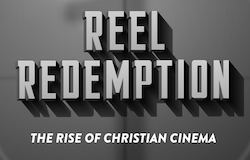When Disaster Strikes, by Tyler Smith
13 Mar
 It seems like almost every week we hear of another disaster- natural or otherwise- befalling some poor, far-away country. We are aware of it largely because we are inundated with media; it’s on every front page, every network, every website. However, once this disaster becomes “old news,” it quickly drops out of view, to be replaced with whatever new thing is happening; perhaps a celebrity scandal or a political skirmish. That’s just the way it is, and to bemoan that would be to beat a horse long since dead.
It seems like almost every week we hear of another disaster- natural or otherwise- befalling some poor, far-away country. We are aware of it largely because we are inundated with media; it’s on every front page, every network, every website. However, once this disaster becomes “old news,” it quickly drops out of view, to be replaced with whatever new thing is happening; perhaps a celebrity scandal or a political skirmish. That’s just the way it is, and to bemoan that would be to beat a horse long since dead.
Nonetheless, that doesn’t change the fact that, though these events may leave our immediate sight, they are not over. Countless lives are affected and they have to continue living this nightmare long after the cameras are gone.
The damage caused by Hurricane Katrina was very well-documented and stayed in the news cycle for an uncharacteristically long time. Perhaps because this was in our country, not some distant land, of which most Americans only have the vaguest concept. This was New Orleans, an American city with history and culture. A city with real personality.
We saw footage of the devastation; the people forced out of their homes to live in another city where they had no ties and no prospects. Our minds reeled at the idea of a person’s entire life just being washed away.
Of course, it wasn’t long before the story started to change. Soon enough, it became a political affair, with fingers being pointed and blame being shifted. To be sure, assigning responsibility is an important aspect of assuring that this sort of thing wouldn’t happen again, but it shifted the focus from the true victims to a series of celebrities and politicians and pundits all giving their opinions on what might have been. And, in the meantime, the inhabitants of New Orleans attempted to put their lives back together.
Zack Godshall’s fascinating film Low and Behold is an attempt to keep our eyes focused on the victims of Hurricane Katrina (or any catastrophic event, really). It features characters whose lives directly intersect with those left in the ruins. These characters try to remain objective, going about their regular lives, but they soon find that they can’t. These images, these people, have left a mark and it will be impossible to go about business as usual.
The story starts with Turner Stull (Barlow Jacobs), a quiet, impressionable young man that has just come to a ravaged New Orleans to work for his uncle Stully (Robert Longstreet) as an insurance claims adjuster. His job is to see the houses, calculate the cost, and report back to the insurance company. That’s all. Simple enough.
Of course, we know that it’s not going to be that easy. With each new house, Turner finds a person. And with each new person, a story. His orders are to remain as objective as possible, get the job done, and move on. After all, there are a lot of houses to be assessed. The more ground covered, the higher the pay.
But Turner can’t seem to help letting himself get involved in these people’s lives. In many cases, it seems as though all they want is somebody to listen- to really hear– exactly what they’ve gone through. Not merely physically, but emotionally. This is never more clear than with Nixon (Eddie Rouse) a blue collar worker on a quest to find his missing dog. Turner happens upon him, and the two do not exactly hit it off. But, after a second meeting, Turner agrees to help Nixon in his search.
As an unlikely friendship forges between these two men, Turner becomes less and less interested in doing his job. He finds it difficult to remove himself from the lives of those most affected by Katrina. This, of course, does not sit well with Uncle Stully, whose frustration with his nephew mounts as the film goes on.
While Stully may seem a one note character, I find him fascinating. When we first meet him, we see him as a shallow, fun-loving swinger, working this insurance job because it’s a fast way to make some good money. His interest in the victims is purely professional. When he finds that his nephew is starting to lag, he feels that it reflects poorly on him; after all, he vouched for this kid. Stully’s anger starts to give way to a general instability. He drinks and chases women just as he always has, but, underneath it all, there seems to be a deep hurt and loneliness. One wonders if perhaps the emotional weight of the job is starting to affect him, too. Certainly, he wouldn’t admit it, but I find myself thinking that the sheer amount of devastation that Stully witnesses has caused him to question some of his life choices and philosophies. It would appear that Stully is at a bit of a crossroads in his life, as almost anyone would be when faced with the horrors of a ravaged populace. He may not specifically know it, but he certainly feels it, and it impels him to lash out at Turner and his new friend.
It is a friendship that, though genuine, is built on a tenuous trust. There are a number of things that go unspoken. It’s entirely likely that Nixon’s dog is dead, yet Turner never suggests it. He knows, as we do, that there are other things going on; deeper things that will be revealed in time. While Nixon puts on a brave face, seeming like a man unphased by the horrific recent events, there is a definite disconnect. While he may joke around, we see an emotional exhaustion in him as he talks about his family and his job. We get the feeling that every moment is a struggle for Nixon.
It is a foregone conclusion that the search for the dog is largely metaphorical and the truth will eventually come out about what Nixon is really looking for. We know this from the moment he meets Turner. And, admittedly, as the film goes on, the unspoken secret becomes more and more obvious, until the very idea of a climactic revelation causes us to shrug. A lesser film would have ignored this fact and treated the eventual reveal as if it were some sort of plot twist.
Thankfully, this was never a film about plot. It’s a film about people. Knowing that Nixon’s breakdown does not engender a feeling of predictability, but of inevitability. There is a certain fatalism to Nixon’s character; the knowledge that we’re on a road with Turner that will unquestionably lead to heartbreak. And, sure enough, when the truth finally comes out, it is not handled like some sort of twist, but as an explosive outpouring of emotion. The truth is revealed not because the plot requires it, but because the character simply cannot hold it in any longer.
The sad narrative of Turner and Nixon is complimented by the documentary elements of the film; by the fact that Turner is talking with real people, whose factual stories are eerily similar to Nixon’s fictional one. Nixon’s climactic breakdown has a retroactive effect on us. We suddenly realize that the plain, forthright way in which these people answer Turner’s questions are an echo of Nixon’s optimistic posturing. And, by extension, his eventual emotional collapse reveals the frustration and devastation that could be simmering just below the surface of every victim’s stoic response.
Low and Behold is a film that not only attempts to keep the focus on these people, but attempts to meet them where they are. While the rest of the media was interested in soundbites and broad strokes, this film attempts to show that these people cannot be summed up quite so easily as we’d like them to be.
Tragedy cannot be reduced to a catch phrase or a logline. It is a complex, ever-changing animal whose effects can be both as immediate as a punch in the face and as long lasting as a bout with cancer. Just because the networks’ patience runs out doesn’t mean the tragedy goes away. And, indeed, even as cities and countries are rebuilt, the very human sense of cosmic betrayal and spiritual disillusionment can linger on for years.
Low and Behold is available for purchase on its website.



No comments yet